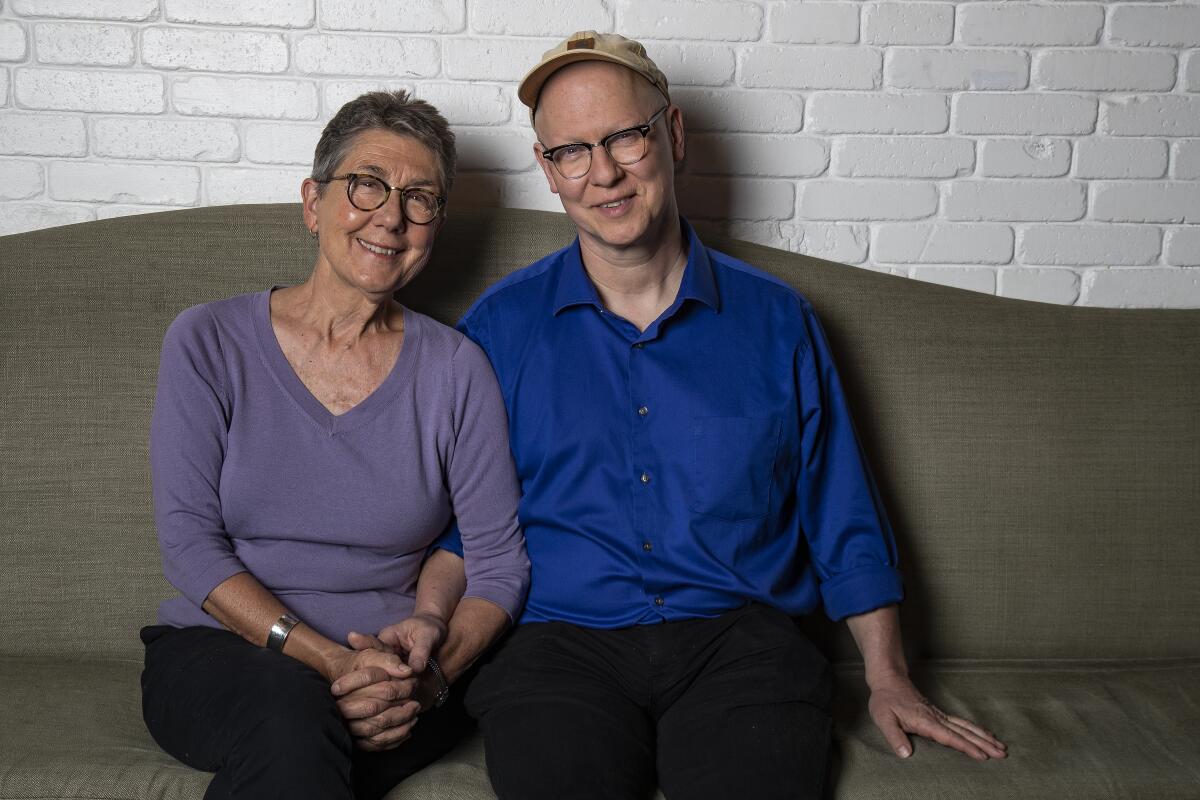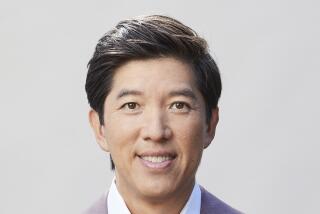Q&A: Why the Obamas became producers of the Netflix documentary ‘American Factory’

When General Motors shuttered its factory outside of Dayton, Ohio, in 2008, filmmakers Julia Reichert and Steven Bognar — who documented the plant’s closing in their Oscar-nominated short “The Last Truck” — thought that was the end of yet another sad story of America’s industrial decline. But as it turned out, life had other plans.
In 2014, the billionaire owner of the Chinese auto-glass manufacturing firm Fuyao decided to invest in the abandoned GM plant, hiring more than 1,000 American workers to work alongside and be trained by hundreds of Chinese workers. No one was quite sure how this experiment in cross-cultural capitalism would work out — and, as it turned out, there would be some pretty major bumps along the way, as frustrations on both sides threatened to boil over.
But whatever happened, Reichert and Bognar — a self-described “long-term couple” who have lived in Dayton for decades and have focused throughout their careers on the lives of working-class men and women — knew they wanted to be there to chronicle it.
Culled from 1,200 hours of footage, the resulting film, “American Factory,” went on to win the U.S. documentary directing award at this year’s Sundance Film Festival and drew the attention of a pair of newcomers to the film world: Barack and Michelle Obama.
Along with Netflix, with whom they announced a partnership in 2018 to produce films and series, and Participant Media, the Obamas decided to throw their weight behind the movie. “American Factory,” which opens in select theaters and will be available via streaming on Netflix on Aug. 21, marks the first title released by the Obamas’ newly minted production company, Higher Ground.
Lest anyone fear that the film is a piece of liberal agitprop or an eat-your-vegetables cinematic lesson in global economics, though, Reichert and Bognar want to reassure you that “American Factory” is neither of those things. (A traveling retrospective of Reichert’s 50-year career premiered at New York’s Museum of Modern Art earlier this year and in November will be presented by the UCLA Film & Television Archive at the Billy Wilder Theater in the Hammer Museum.)
“We try never to make ‘an issue film,’ ” says Bognar, speaking to The Times alongside Reichert during a recent visit to L.A. “We try to tell stories about people.”
When Fuyao took over the former GM plant, did you immediately see the possibilities for a documentary?
Reichert: We were aware, like everybody, that the rivalry between China and the U.S. was a big story in the 21st century — probably one of the biggest after global warming. And here it was coming to our little blue-collar town of Dayton. So we kind of thought: Whatever is going to happen is going to be interesting. But we really didn’t know what to expect.
When we started, you try to think, What are we trying to follow? We had the question: Will this endeavor succeed? Then when we thought about that, it’s like: Well, what does success mean — and for who? For the workers on the floor, it’s a different success than for the owner or the management.
Bognar: You never know how a movie is going to turn out when you’re in the early days, but we knew this was a big story and that we were lucky to be chasing it.
The movie devotes as much attention to the Chinese workers as it does to the American workers. Was that the plan from the start?
Reichert: In the beginning, I would say our hearts were with the blue-collar Americans. We understood what they’d been through. We understood they were so desperate for a stable job with benefits, something that wasn’t seasonal, something that wouldn’t close on them, something that would make them more than $9 or $10 an hour.
But pretty soon, we started realizing that there were hundreds of Chinese workers in the factory who were also blue-collar workers but who didn’t speak English, who had never been to America, had never been anywhere. And we started thinking, Wow, what are their lives like?
Though both the Chinese and the Americans start out with a lot of hope and goodwill, we quickly see the difficulties that this clash of different cultures and languages presents. At a time when there’s so much talk about xenophobia in America, what are you hoping people take away from the film?
Bognar: We wanted to make a film that was depolarizing, that had nuance and complexity. That’s what we were striving for. As we all know, these are very polarized times and it’s easy to run to the barricades. So we were hoping the film can resonate as a way to say: You know what? It’s actually better if we talk to each other and don’t just retreat to our corners and our slogans.
Despite that culture clash, the film shows that, in the end, the Chinese workers and the American workers are all being buffeted by the same forces of globalization and automation.
Bognar: We’re hoping the film can spark a conversation about that. Big tectonic plates around the world are disrupting the lives of working people. We hope the film can say: Is this sustainable? What are we going to do about it? Is it fair? Is it right?
Reichert: I think our film looks at: What is the fate of the American working class? It’s very unclear. If the unions keep being beaten down by these anti-union forces, if wages are kept low the way they are and the billionaire class gets more and more billions — there’s something just wrong in the world that we have to do something about.
Because of the subject matter, some people have compared “American Factory” to Michael Moore’s 1989 documentary “Roger & Me.” But it’s obviously a very different type of film.
Reichert: I love Michael Moore. He kind of busted open the documentary form. He was like the punk-rock kid who crashed the party and brought humor into what we do, and I really admire him. But that’s just not our kind of work.
We didn’t want to make a muckraking movie. Every film you make gives you different challenges and different gifts. This had the cultural challenge, big time. But the gift was access and the trust we were able to build, and I think once you get that kind of gift you don’t do a muckraking film. You honor the gift by listening to everybody and being fair to everybody.
What went through your heads when the Obamas came on board the film?
Reichert: We didn’t know what it was going to mean. But we love them so much that we just said, “OK, it’s going to be good so we’re going to go with it.”
Bognar: We had a chance to have lunch with the president and the first lady and they were incredibly gracious, warm and funny. They talked about our movie and that was surreal. To have the president saying, “You know that scene where ...?” — that was really cool.
From talking to them, what’s your sense of why they wanted to get involved with the film?
Reichert: You know, their company is called Higher Ground. They want to take the higher ground. This is a very divisive time in our country and our film tries to listen to everybody. I also think the first lady related because her dad is a working-class guy, so I think she related to those aspects of the film, and [Barack] related to the policy implications of it. But the biggest thing was it’s about everyday people and it’s evenhanded.
You’ve each made documentaries individually and now you’ve co-directed a few. What is the key to working together while maintaining a relationship?
Bognar: The key is that I always believe that if Julia is arguing for something, she’s not arguing to win — she’s arguing because she believes it’s best for the movie. And I think she feels that about me. You’ve got to believe that your partner has the best interests of the work in mind, not their own personal victory in the debate.
Reichert: We have a couple of rules, which we don’t stick to that well. One is we don’t talk about the film when we’re in bed. And the other, which we really have a hard time with, is we don’t talk about the film if we’re drinking. [Laughs] After the first glass of wine it usually goes south.
Dayton has obviously been in the news recently in the wake of the mass shooting there. What should those of us who’ve never been there know about the people of Dayton?
Bognar: This tragedy that just happened really puts in stark relief how small a town Dayton is. We’re lucky personally that none of our friends were wounded or killed but we know people who were close friends with people who were killed. The degrees of separation are pretty few.
Reichert: We’re a scrappy bunch in Dayton, I’ll say that. We consider Dayton a city of inventors and a blue-collar city. The airplane was invented there by the Wright Brothers, not North Carolina — make no mistake about it. The pop-top can. Cheez-Its. The electric starter motor. The cash register. There’s a sense of a kind of creative spirit, that we were almost like the Silicon Valley of two generations ago. So we’re very proud of that. And we’re proud of the fact that we’ve made it through some really, really horrible times and we’re still there.
This interview was condensed and edited.
More to Read
The biggest entertainment stories
Get our big stories about Hollywood, film, television, music, arts, culture and more right in your inbox as soon as they publish.
You may occasionally receive promotional content from the Los Angeles Times.







